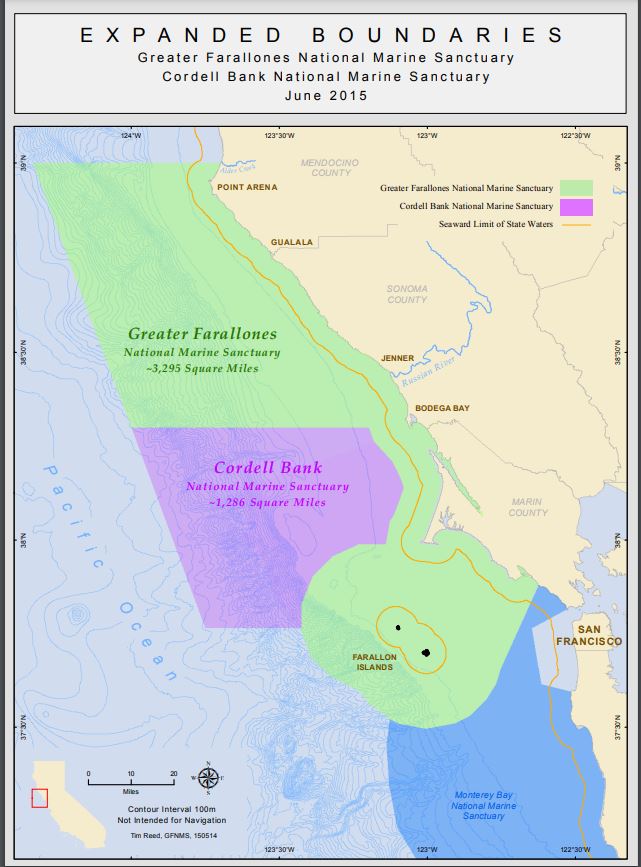This is a historial post from Hiking the California Trail, a 1998/2002 book set by Bob Lorentz and Richard Nichols. Where possible an update has been provided.
Imagine, as you walk along the north coast on the Coastal Trail, looking out over the Pacific and seeing ten oil drilling platforms. That’s what Big Oil wants and the U.S. Department of Interior has proposed in Lease Sale #53, currently on hold thanks to intense public opposition. As long as our society is dependent on oil or until a permanent marine sanctuary is established along the north coast, however, the danger of oil development on the pristine Mendocino, Humboldt and Del Norte coasts remains a threat.
If you think offshore oil isn’t a bad trade-off for unlimited use of the family car, imagine further, as you pass scenic north coast hamlets, onshore service bases with 30 acres of tanks, pipes, towers, buildings and pavement blotching the landscape. Consider the visual effect of pipeline right-of-ways paralleling the trail or Highway I and spanning the canyons, walls of concrete rip-rap disrupting sweeping sets of surf.
Ponder dozens of helicopter flights daily shuttling supplies and crews between land and platforms. Worst of all, imagine a major oil spill devastating abundant coastal marine life, clogging estuaries and beaches with tarry goo, reducing bird populations and wreaking mayhem on this enthralling shoreline.
In 1988 thousands of coast residents testified for two days before a Department of Interior panel in Fort Bragg, voicing their opposition to oil development through anger, tears, humor, song, poetry and dance, bringing the attention of national media and politicians to this quiet area. Rachel Binah, owner of Rachel’s Inn at Little River, who spearheaded the opposition, proposed a National Ocean Sanctuary to protect the unspoiled coast from oil and other heavy industrial threats.
In 1989 Congress established the permanent Cordell Bank National Marine Sanctuary off the Sonoma/Marin coast. In 1992 protection was won for California’s central coast in the Monterey Bay National Marine Sanctuary, but Congress has failed as of this writing to provide permanent protection for the Mendocino, Humboldt and Del Norte County coasts.
Now with George W. Bush as president, Big Oil wants the north coast more than ever. If, after doing some hiking here, you’d prefer we all owned the north coast and kept it safe, get an Ocean Sanctuary or No Offshore Oil bumper sticker for your car. And when you get home, tell your elected representatives how you feel about oil development on California’s north coast.
—Originally Published in Hiking the California Coastal Trail: Guide to Walking the Golden State's Beaches and Bluff from Border to Border - Volume One: Oregon to Monterey (2nd Edition) by Bob Lorentzen and Richard Nichols
Update 10/4/2023
Designated in 1981, Gulf of the Farallones National Marine Sanctuary (GFNMS) spanned 1,279-square-miles (966 square nautical miles) just north and west of San Francisco Bay, and protected open ocean, nearshore tidal flats, rocky intertidal areas, estuarine wetlands, subtidal reefs, and coastal beaches within its boundaries. In 2015, GFNMS expanded north to Point Arena and west of their original boundaries to encompass 3,295 square miles, and changed their name to Greater Farallones National Marine Sanctuary. Citizen action and determination with support of government officials was the key to the Sanctuary Expansion and it will take the same to protect the coasts of Northern Mendocino, Humboldt, and Del Norte Counties.

For trail section - Mendocino Section 10, Mendocino Section 11, Mendocino Section 12
